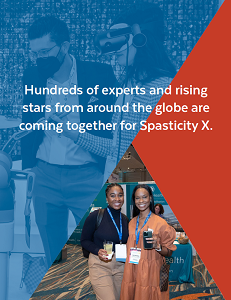PS2-Mastering Post-Stroke Spasticity with Best Evidence for Optimal Patient Care
Thursday, October 24, 2024
4:50 PM - 5:15 PM
Location: Galleria 4 (Tanglewood)


Jörg Wissel, MD
Berlin, Germany

Abderrazak Hajjioui, MD
Tangier, Morocco
Presenter(s)
Session Co-Chair(s)
Post-stroke spasticity remains a significant rehabilitation challenge, necessitating the implementation of evidence-based strategies to optimize patient outcomes. This presentation will deliver an in-depth analysis of the most effective interventions for managing post-stroke spasticity, derived from a comprehensive modified scoping review of literature spanning from 2000 to 2023. Our review meticulously adhered to PRISMA guidelines, identifying 32 treatments, with 11 supported by high-quality (grade A) evidence. These top-tier interventions include stretching exercises, static stretching with positional orthosis, transcutaneous electrical nerve stimulation (TENS), extracorporeal shock wave therapy (ESWT), repetitive peripheral magnetic stimulation (rPMS), non-invasive brain stimulation (NIBS), botulinum toxin A (BoNT-A) injections, dry needling, intrathecal baclofen (ITB), whole-body vibration (WBV), and localized muscle vibration (LMV). Each of these treatments has demonstrated superior efficacy in enhancing functional recovery and improving quality of life for post-stroke patients. This presentation will offer practical insights into the application of these multimodal therapies, highlighting their integration into clinical practice to transform post-stroke care. Attendees will learn about the mechanisms, benefits, and implementation strategies for each intervention, supported by the latest research findings. Furthermore, the lecture will emphasize future research directions to refine these treatments and explore innovative therapeutic options. Join this session to discover the cutting-edge advancements in spasticity management and their potential to significantly improve patient outcomes, empowering healthcare professionals to elevate the standard of care for stroke survivors.
Reference
Suputtitada A*, Chatromyen S, Chen CPC, Simpson DM. Best Practice Guidelines for the Management of Patients with Post-Stroke Spasticity: A Modified Scoping Review. Toxins 2024, 16, 98. https://doi.org/10.3390/ toxins16020098
Reference
Suputtitada A*, Chatromyen S, Chen CPC, Simpson DM. Best Practice Guidelines for the Management of Patients with Post-Stroke Spasticity: A Modified Scoping Review. Toxins 2024, 16, 98. https://doi.org/10.3390/ toxins16020098

